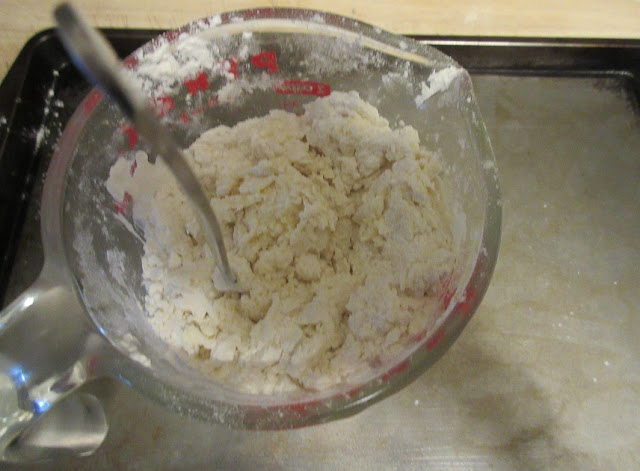Vegetables in 4-6 days, just add water
 |
| Growing bean sprout |
 |
| Stir fried noodles with bean sprouts |
Egg noodles from scratch
Ingredients: 1 egg, 1/2 teaspoon of sodium carbonate, flour and water.Tools: hands, pasta machine, measuring cup, flat surface e.g. baking pan.
Sodium carbonate (Na2CO3) can be made by heating sodium bicarbonate (NaHCO3). It is also available as washing soda, however I don't know if they are food grade.
https://cooking.stackexchange.com/questions/9072/what-flour-and-technique-do-i-need-for-hand-pulled-noodles
Without sodium carbonate it's possible to have hand-pulled noodles with any flour. The downside is you will have to knead the dough for 45 minutes and leave to rest for 2 hours until you can start pulling your noodle strands.
The alkaline dough also help to discourage Salmonella, but hey you are going to boil the noodles at some point anyway.
1. Add 1 large egg, fill water to 1/2 mark, add 1/3 teaspoon of sodium carbonate.
 |
| Egg,, water and some sodium carbonate |
 |
| Add flour to same cup |
 |
| Stir a bit |
 |
| Lumpy mix from cup |
5. Knead the dough until your hands are clean. It is a very tough dough, but it is a good exercise.
 |
| This is the time to stop |
 |
| Now it is time to clean the cup |
7. I roll the dough with my manual pasta machine starting from the thickest setting. I also trim the rugged edges and patch up holes in the dough. Go one setting at a time to reduce the thickness of the dough sheets. Trim the length when the sheets gets too long.
This dough can be used for making wonton wrapping.
8. Cut the dough with the attachment. Here is the finished product.I don't bother adding dry flour as the noodle is not sticky.
9. At this point you can put it in boiling water and it cooks in a minute. Rinse under cold water to stops the cooking. The noodle is very chewy. Serves 4-6. The stir fried noodles was done with 1/4 of the dough.
10. I put it in a plastic container and freeze it. I put a layer of food wrap between servings so that they don't freeze into one lump. It take less than 2 minutes to cook in boiling water from frozen as there is no need for defrosting.
Flat hook for DIY mask
I made a HKMask for personal protection. I am not a arts and craft person, so I had to make do with what I have. I modified the design as I don't have any thin elastic bands. I do have a lot of fat ones from my grocery.
I use the I core from old transformer to make a flat hook and a AWG10 solid wire (household wiring) for the loop. The rubber band is very strong, so it is important to have the right cord lengths for comfort and fit. I crimped the 2mm paracord gently during length adjustment. Once the adjustment is done, I crimped tightly to hold it in place.
 |
| DIY flat hook |



























